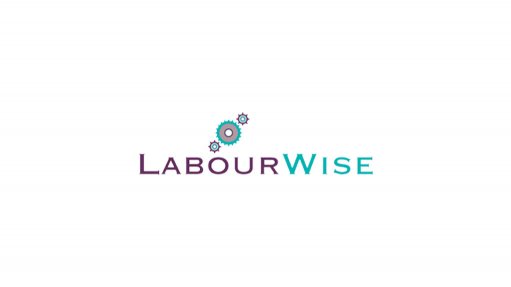
The UIF has added a R3 500 per month flat rate benefit to the existing relief measures, which it refers to as a “National Disaster Benefit”.
Some details are contained in an updated version of the UIF’s “Easy – Aid Guide for Employers”.
What does it say?
There is a lot of uncertainty surrounding this matter. The conflicting views doing the rounds in the media have not been helpful. We are doing our best to interpret the regulatory changes in a way that makes sense. The situation may change from day to day and our views should not be regarded as legal advice.
Here is the relevant extract from the UIF’s Easy-Aid Guide:
- The employer may decide, as a direct result from the current Corona virus (COVID-19) pandemic to close their business for a period and send employees home. This constitutes a temporary lay-off. If the employer cannot pay his employees for this period, the employer can apply for the “National Disaster Benefit” from the UIF.
- This benefit will be de-linked from the UIF’s normal benefit structure and therefore the normal rule that for every 4 days worked the employee accumulated 1 credit day and maximum credit days payable is 365 for every 4 completed years will not apply.
- This benefit will be at a flat rate equal to the minimum wage (R3 500) per employee for the duration of the shutdown or a maximum period of three months, whichever period is the shortest.
- If an employee is ill, temporary lay-off or unemployed for longer than three months, the normal UIF benefits as explained below will apply.
What does it mean?
The intention is clearly to provide temporary relief so that employers are able to pay employees during the current lay-off. The following questions have arisen:
Does it apply to the 21-day lock-down?
The wording suggests that it applies to employers “who decide to close their business”. The lock-down is imposed on all citizens in terms of the National Disaster Act. Neither employers nor employees decided that businesses should be closed. Although not clearly stated, we nevertheless assume that the benefit would also apply to the upcoming 21-day lock-down.
Do employers have to pay their employees?
During the 21-day lock-down: The guidelines do not, in our view, impose an obligation on employers to pay employees during the 21-day lock-down. Employers are, however, encouraged to pay their employees a pro rata portion of the R3 500 in respect of the days that they are laid off in March and April, respectively, if they have the cashflow and are able to do so.
After the 21-day lock-down: Any lay-off beyond the 21-day lock-down would have to be agreed. The fact that there is an amount of R3 500 per month that employers may claim from the UIF, could mean that employees are unlikely to agree to a lay-off unless their employers agree to pay them at least R3 500 per month. If employers don’t agree to pay in advance of receipt of the UIF benefit (whether it is because they don’t have the cashflow to do so, or for other reasons), it is unclear at this stage whether employees would have a claim against the employer. Again, employers are encouraged to pay their employees if they are able to do so.
Who applies for the benefit?
The employer would apply to recover the R3 500 per month paid to employees from the UIF.
Existing leave and lay-off arrangements
The employer may already have entered into agreements with employees that they should take annual leave or that they would be laid off without pay.
Leave granted: In cases where employees have already agreed to take leave during the shutdown period, employers may decide to apply for the national disaster benefit on the basis that the employees have been laid off without pay. If the claim is successful, the leave granted can be reversed. If the national disaster benefit is not granted, the employer would be justified to maintain the original leave arrangement.
Agreed unpaid lay-off: Where employees have agreed to be laid off without being paid, employers that are able to do so are encouraged to pay employees the R3 500 per month flat rate and submit a claim for the national disaster benefit. Even where employers are unable to pay, it would make sense to submit an application in terms of the National Disaster Benefit scheme anyway. If it is paid eventually out, employers can pay the amount over to the employees.
UIF credits
Employers will be able to claim the national disaster benefit for all employees, irrespective of the duration of their employment. Employees do not have to have the credits normally required for UIF claims.
Documents/Forms
The following documents need to be submitted:
- UI 19 and UI 2.7 (completed by employer)
- UI 2.1
- UI 2.8 (bank form completed by bank)
- Letter from employer confirming temporary lay-off is due to the Coronavirus
- Copy of ID document
At the time of publishing of the article, the UI forms referred to above had not yet been adapted to provide for temporary lay-off, or for claims to be submitted by the employer. We suggest that you keep an eye on the DoL’s resources for updated forms.
For how long can the R3 500 be paid?
The national disaster benefit may be payable for a maximum period of three months. After this period normal UIF benefits will apply.
For assistance paying subscribers to our service may contact info@labourwise.co.za.
Written by Jan Truter for www.labourwise.co.za
PS. The DoL updated “Easy – Aid Guide” is available at https://www.labourwise.co.za/downloads/topical-temporary-download.
Disclaimer: The material above is provided for general information purposes only and does not constitute legal or professional advice. Neither the author nor the publisher accepts responsibility for any loss or damage that may arise from reliance on information contained in this article.